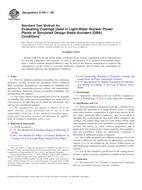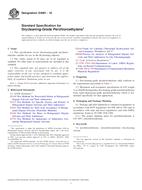1.1”This test method covers determination of the dynamic elastic properties of advanced ceramics at ambient temperatures. Specimens of these materials possess specific mechanical resonant frequencies that are determined by the elastic modulus, mass, and geometry of the test specimen. The dynamic elastic properties of a material can therefore be computed if the geometry, mass, and mechanical resonant frequencies of a suitable (rectangular, cylindrical, or disc geometry) test specimen of that material can be measured. The resonant frequencies in flexure and torsion are measured by excitation of vibrations of the test specimen in a supported mode by a singular elastic strike with an impulse tool (Section 4 and Fig. 1, Fig. 3, and Fig. 4). Dynamic Young”’s modulus is determined using the resonant frequency in the flexural mode of vibration. The dynamic shear modulus, or modulus of rigidity, is found using torsional resonant vibrations. Dynamic Young”’s modulus and dynamic shear modulus are used to compute Poisson”’s ratio.
FIG. 1”Block Diagram of Typical Test Apparatus
Product Details
- Published:
- 08/01/2021
- Number of Pages:
- 18
- File Size:
- 1 file , 540 KB
- Redline File Size:
- 2 files , 1.2 MB


